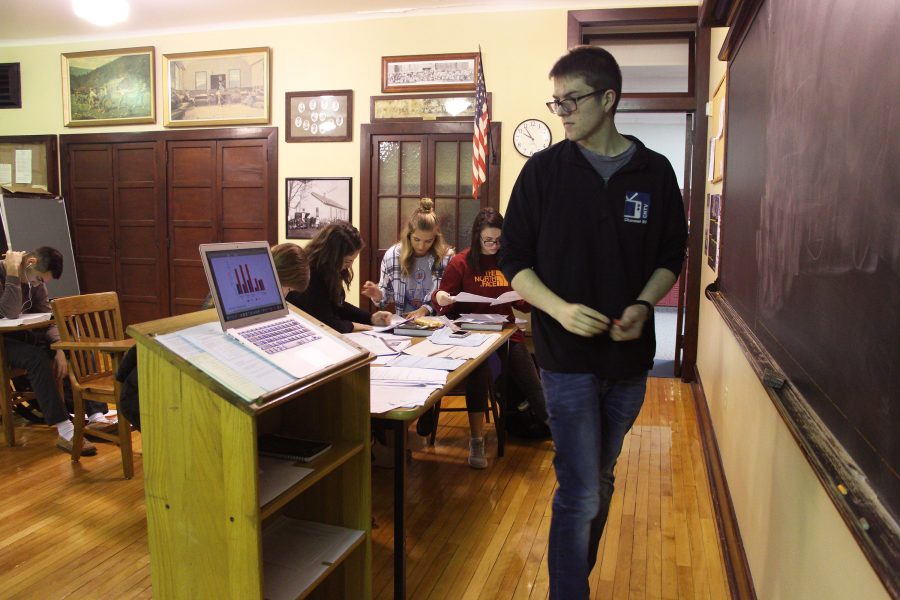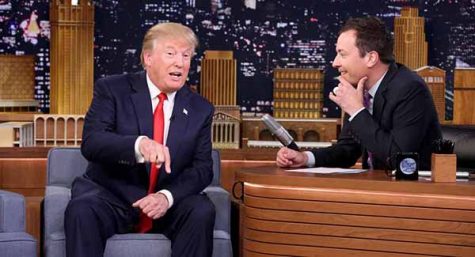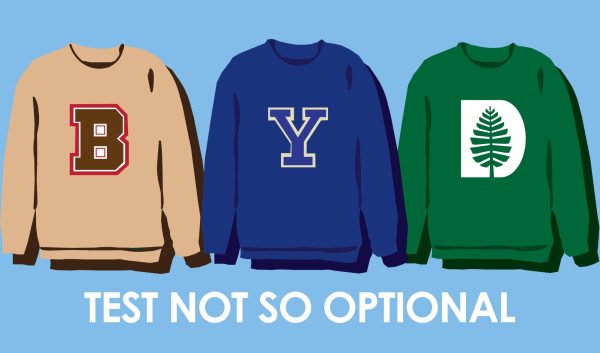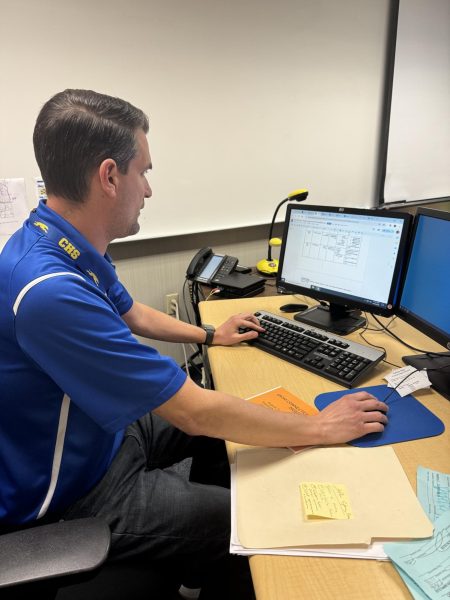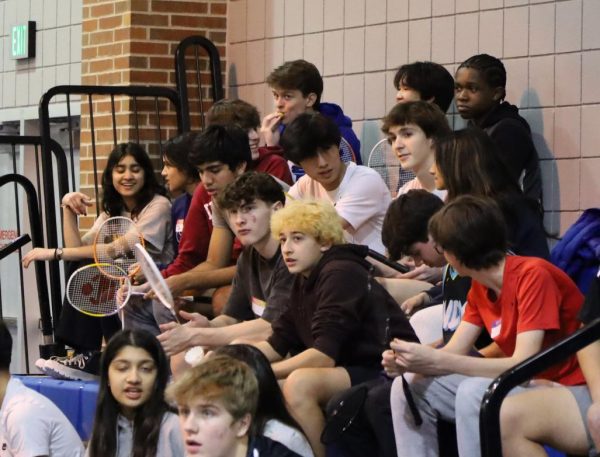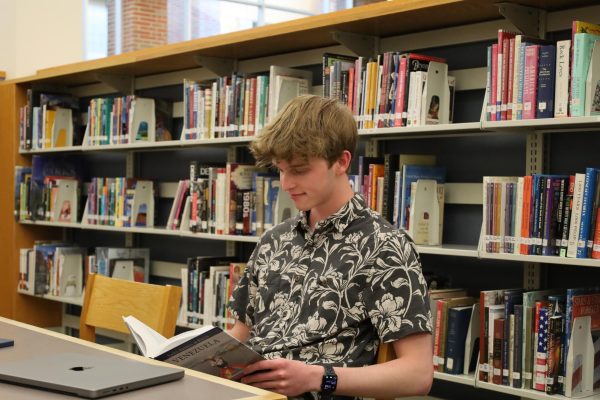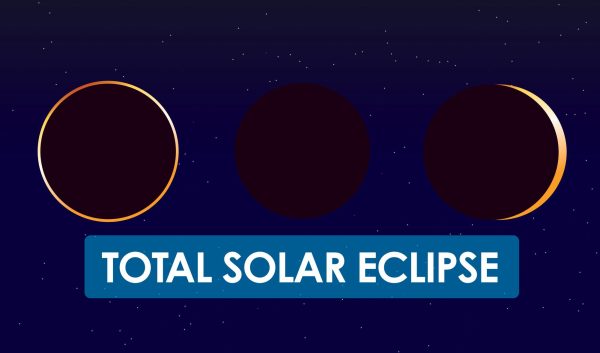A Young President Predictor
Senior Jack Missler develops algorithm to predict election results, reflects on outcome
DEVIANT DERIVATION: Senior Jack Missler explains how he developed his method of predicting the election results by listing the statistics he used to help him derive his equation. He said he is disappointed with the results, but finds that it is an opportunity to grow.
According to CNN, a record-breaking 71 million people watched the results of the election come in on Nov. 8. While the entire nation was awake, senior Jack Missler eagerly waited to see if his algorithm predicting voter turnout and election results would work.
Missler said, “(I developed two) separate equations. The first is to predict how many people will come out to vote, and I have been able to test that equation from 1948 to present. The second equation is how people will vote; basically, who will win. And for that one, we looked at the 2012 election really in depth because that was our most up to date one, and then we looked mainly at 2004 and 2008.”
According to Missler, he correctly predicted voter turnout and popular vote; however, he incorrectly predicted the Electoral College results.
Missler said, “The equation predicted Clinton. The first equation correctly predicted voter turnout; it was within my acceptable margins of error. The second equation also got the popular vote winner right. It got the electoral college split correct, just not who would win the split right. My prediction predicted that it would be Clinton 290 to Trump 248. However, my equation and the methodology I used was more accurate than that of the New York Times and the Huffington Post, among others. I was still very pleased with the results.”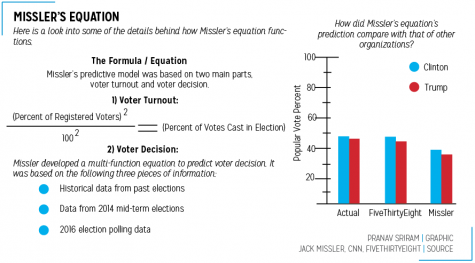
According to IB Math teacher Paige Wehr and IB US History teacher Will Ellery, despite the incorrect prediction, the development of such an algorithm has a wide range of implications.
Wehr said, “It could be used to prevent gerrymandering, which is where you create more districts where people vote so an election goes a certain way. So hopefully, it would be used to obliterate those kinds of unfair practices. It could hypothetically also be used for bad purposes as well, and you could influence an election based by getting certain people to turn out and getting certain people to not turn out.”
“This year proved that the polls were horribly wrong. So the hope is, with more of a mathematical perspective, we can help people make certain decisions,” Ellery said. “I would argue this is a launching point than an end point, so he can use this to further modify it and move forward to get research and play it out in scenarios and simulations and see if he really (has) stumbled onto something that can be an accurate predictor. This was simply an unusual election.”
Missler said that it is still impossible to create the ‘perfect’ equation which will predict the results every time, because the equation is only as accurate as the polls are inaccurate. Rather, an equation like this can provide a framework.
He said, “If all the polls are wrong, the equations are going to be wrong by that factor. Finding better polling data is our first priority. Also, humans are a strange thing, and they are so unpredictable. Regardless of what people think, people are going to vote how they feel.”
Ellery said he agreed.
“I do not believe this is possible, and this particular election showed that. However, Jack was more accurate than the vast majority of prognosticators. Obviously, there is a human element, and we can’t control what the human element is, and as long as that is involved, there is always going to be the possibility of major inaccuracies,” he said.
As a result of the success of his project, Missler has been contacted by prestigious institutions. Statisticians and professors at those colleges are currently in the process of checking the math of the equation and making sure it is meaningful.
Missler said, “I will most likely use (the equation) to get into college. However, I am faced with two paths. One, I can publish it in a political science journal, and with that comes recognition for publications. Or, the other option is I can sell the equation to the Democratic National Committee (DNC) or the Republican National Committee (RNC), and I would be working for them as a statistician both during and after college. For example, in 2020, I would be using the equation during the campaign trail and tell Candidate X to go to place Y and give a speech about certain topics which will help gain support and pinpoint certain areas.”
Missler also said that he wants to develop the equation and figure out how to accurately predict the Electoral College results, and also determine voter turnout for specific minorities, since right now, the equation predicts overall turnout.
“It’s surprisingly easy to make a big change,” he said. “It does require some hard work and some sacrifice, but this stuff is possible. You have nothing to lose in something like this.”
Your donation will support the student journalists of Carmel High School - IN. Your contribution will allow us to purchase equipment and cover our annual website hosting costs.



























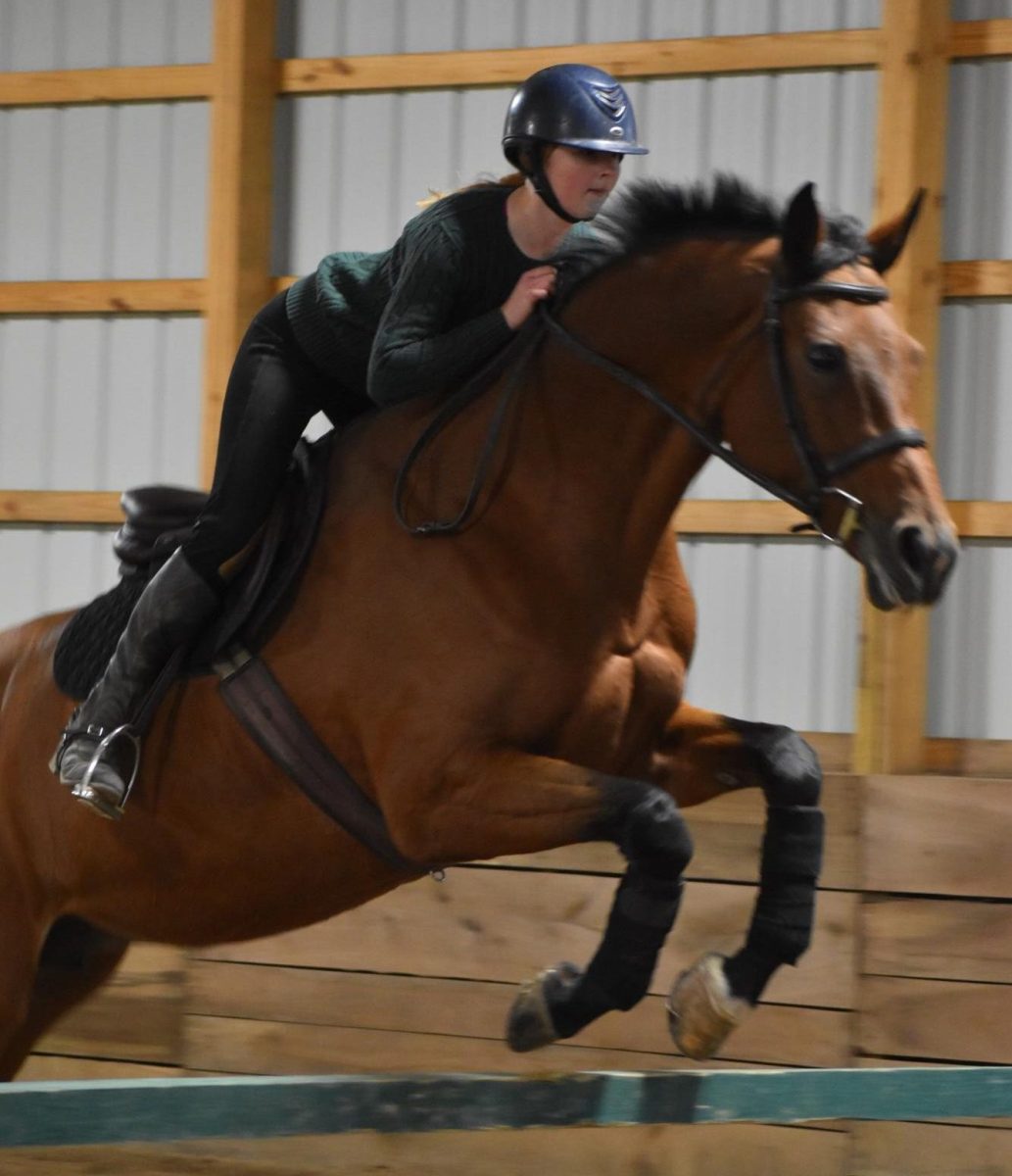






![British royalty are American celebrities [opinion]](https://hilite.org/wp-content/uploads/2024/03/Screenshot-2024-03-24-1.44.57-PM.png)


















![Review: “Suits” is a perfect blend of legal drama and humor [MUSE]](https://hilite.org/wp-content/uploads/2024/04/unnamed-1.png)
![Chelsea Meng on her instagram-run bracelet shop [Biz Buzz]](https://hilite.org/wp-content/uploads/2024/04/IMG_2446-1200x838.jpg)
![Review: Quiet on Set: The Dark Side of Kids TV is the long awaited exposé of pedophilia within the children’s entertainment industry [MUSE]](https://hilite.org/wp-content/uploads/2024/04/unnamed.jpg)
![Review: “The Iron Claw” cannot get enough praise [MUSE]](https://hilite.org/wp-content/uploads/2024/04/unnamed.png)
![Review: “The Bear” sets an unbelievably high bar for future comedy shows [MUSE]](https://hilite.org/wp-content/uploads/2024/03/unnamed.png)
![Review in Print: Maripaz Villar brings a delightfully unique style to the world of WEBTOON [MUSE]](https://hilite.org/wp-content/uploads/2023/12/maripazcover-1200x960.jpg)
![Review: “The Sword of Kaigen” is a masterpiece [MUSE]](https://hilite.org/wp-content/uploads/2023/11/Screenshot-2023-11-26-201051.png)
![Review: Gateron Oil Kings, great linear switches, okay price [MUSE]](https://hilite.org/wp-content/uploads/2023/11/Screenshot-2023-11-26-200553.png)
![Review: “A Haunting in Venice” is a significant improvement from other Agatha Christie adaptations [MUSE]](https://hilite.org/wp-content/uploads/2023/11/e7ee2938a6d422669771bce6d8088521.jpg)
![Review: A Thanksgiving story from elementary school, still just as interesting [MUSE]](https://hilite.org/wp-content/uploads/2023/11/Screenshot-2023-11-26-195514-987x1200.png)
![Review: When I Fly Towards You, cute, uplifting youth drama [MUSE]](https://hilite.org/wp-content/uploads/2023/09/When-I-Fly-Towards-You-Chinese-drama.png)
![Postcards from Muse: Hawaii Travel Diary [MUSE]](https://hilite.org/wp-content/uploads/2023/09/My-project-1-1200x1200.jpg)
![Review: Ladybug & Cat Noir: The Movie, departure from original show [MUSE]](https://hilite.org/wp-content/uploads/2023/09/Ladybug__Cat_Noir_-_The_Movie_poster.jpg)
![Review in Print: Hidden Love is the cute, uplifting drama everyone needs [MUSE]](https://hilite.org/wp-content/uploads/2023/09/hiddenlovecover-e1693597208225-1030x1200.png)
![Review in Print: Heartstopper is the heartwarming queer romance we all need [MUSE]](https://hilite.org/wp-content/uploads/2023/08/museheartstoppercover-1200x654.png)






















